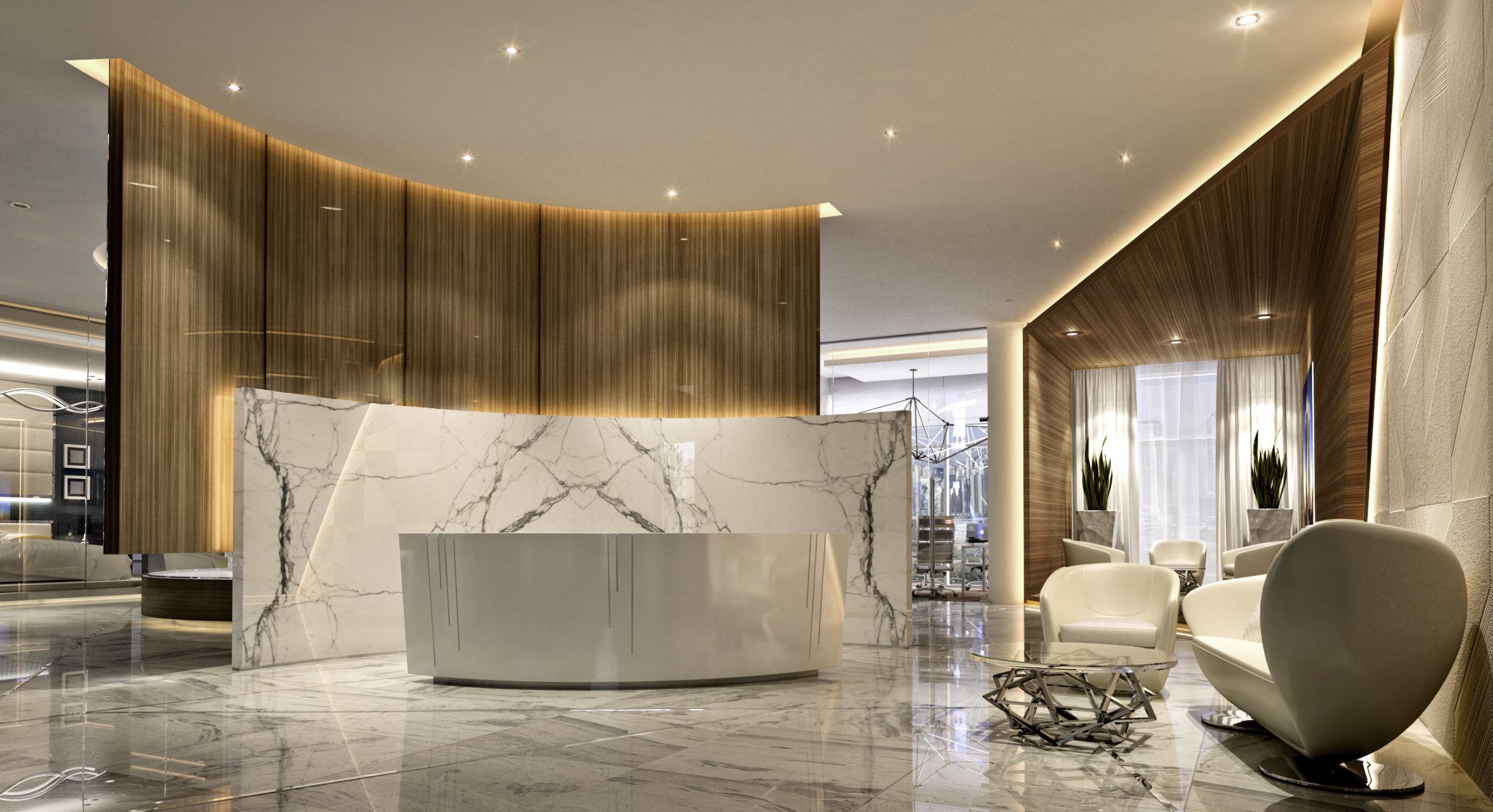Sometimes you hear Ceramic used interchangeably with Porcelain when it comes to floor and wall tiles. Although they belong to the same family, porcelain and ceramic tiles are more like cousins than twins. For condominium common areas, durability is key, and porcelain is the material of choice. But just to explain it, here’s how the two differ and where they’re best used.
Ceramic Tile
The reliable ceramic tile has been a staple in homes and public places for centuries. It offers a variety of colors and styles so that you have many options to choose from. Ceramic tiles are made from mixing clay, earthen elements, powders, and water. It is then fired in a kiln at extremely hot temperatures. The advantage of ceramic tiles is that it is versatile as it can easily be cut into any shape you are looking for. The disadvantage of ceramic is that it is not very durable so if you do want to use it, it should be in less traffic dense areas so that it will last longer without breaking or cracking. Ceramic is more cost-friendly than Porcelain tiles so if you are looking for beautiful styles and colors at an affordable price in a residential setting, ceramic will do nicely.
Porcelain Tile
Porcelain is known for its high durability. Just like ceramic, porcelain is made from clay and natural materials that are fired in a kiln. The design and hardness of the porcelain tiles depends on how much of the natural material, specifically feldspar, is combined with the clay. Porcelain is actually a type of ceramic that uses denser clay that is fired at a higher temperature to make it more durable and less water absorbent (vitreous) to make it useful in more high-traffic areas. When coupled with its ease of cleaning and simple maintenance requirements, porcelain can help you create surfaces that will stand the test of time, assuming you select the right product for the right application.
Along with being durable, porcelain has a very low porosity, meaning it contains few pores and imperfections that can accumulate dirt and grime over the years, leading to a grungy appearance even after the floors have been cleaned. Best of all, those characteristics are innate to porcelain, which doesn’t require expensive waxing or other maintenance routines that can easily double or triple the true cost of a flooring material over the years. That being said, polished or honed surfaces can still be slightly porous and need to be sealed.
The upsides of porcelain tile come with a higher price, but presuming your designer specifies the correct porcelain tile, its long-term durability will make it worthwhile.
In summary the points to consider when choosing porcelain tiles are:
Thickness
Large format porcelain slab is dramatic and beautiful and when used on walls, it can come in 6mm thick. This makes it lighter and more suitable for applications, such as elevator surrounds. 12 mm thick slab is suitable for floors mainly when installing in a new build.
Finish or Sheen
Your designer must ensure tiles used on floors in public areas have a non-slip R rating, or low slip coefficient, to prevent falls on wet tile especially. Shiny, glossy floors are gorgeous but will not pass building code if they don’t meet the floor slip testing requirements.
Size
Larger and larger format tiles are much sought after these days, but they can make tile installers cringe. The challenges with leveling floors in existing buildings for refurbishment makes large format slab not really suitable for flooring. But consider a concierge desk or accent piece, even a show-stopping table top. Large format slab is almost never available in tile in the exact same pattern – something to consider when creating an overall scheme where you want tiles on the walls to match the floors. Also to consider is where will the tiler set up for making cuts? If the slab must go to a fabricator, this adds expense, but is a must if very large slabs are used.
Design
Porcelain has more textures and natural stone looks than ever before and it can sometimes be hard to tell porcelain stones from the real thing. Advances in fabrication, printing and firing have made porcelain the top choice, with a dizzying range of colours and textures.
Maintenance
There is nothing easier to maintain than porcelain tile, as long as it is kept clean and set properly it will last a lifetime. Some Matte finishes will collect dirt over time, especially the finishes that mimic natural rock – they have a porous surface. But compared to natural stone, the difference makes porcelain very practical for common areas like elevator landings. Many buildings are replacing their elevator landing carpet with porcelain tile as stains simply don’t show, with the exception of grout lines, and grout should be chosen carefully to suit the application as well. The grout colour chosen near a garbage chute door may be different from what is used on a vertical surface.
It can be hard to make the right decision when trying to decide what type of tile will best suit your condo building’s needs. Our experts at Folio Interiors, can help advise you so that you can be confident in your choice. Contact us today to learn more about Folio’s design and full renovation and refurbishment services.





